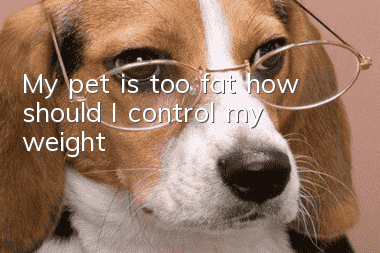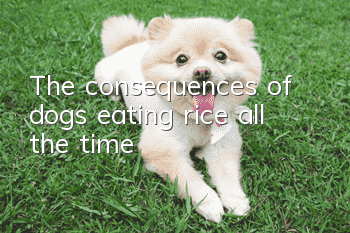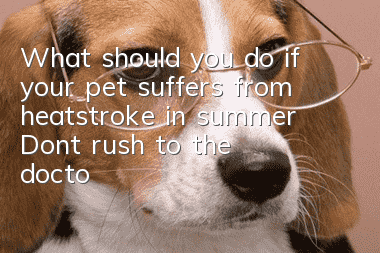My pet is too fat, how should I control my weight?

Excessive obesity is a killer of human health, and pets are no exception. Excessive obesity can cause many health problems. If the organs cannot bear such an obese body, a warning will be issued! Many people think that if you love your pet, you must feed it all the time. . It is important to know that many pets do not have a strong sense of fullness and will eat as much as they are given. In addition, many pets are raised as slaves and lack exercise, which will lead to excessive obesity over time.
The dangers and causes of obesity
Obesity is mainly caused by overnutrition and lack of exercise. Obese dogs are prone to circulatory and respiratory diseases, and their ability to tolerate exercise and resist infection will also be reduced. Obesity in some pets develops during the growth period.
Generally speaking, if you eat more than your body needs, the excess energy will be deposited into fat and increase your weight. Even if your appetite is normal or even decreased, your weight will remain relatively stable. Excessive diet during the growth period causes irreversible growth in the number of fat cells, and the growth of pets increases the size of these cells.
How to tell if a pet is overweight?
It is generally believed that an animal is overweight if its weight exceeds 15% of its normal ideal weight. In a normal animal, the ribs should be palpable under the fat layer, and a clear "girdle line" should be visible behind the rib cage when viewed from above. Obese animals have no waistline because the layer of fat beneath the skin thickens. Cat fat usually accumulates in the groin to form an "apron."
Weight loss plan
Ask a veterinarian
Before giving weight loss to an obese animal, a veterinarian should conduct a comprehensive physical examination to confirm whether its obesity is simply obesity or caused by some disease. If it is the latter, symptomatic treatment should be given immediately.
Make a meal plan
Weight loss can be achieved by controlled reduction of the caloric energy content of food. You can use low-calorie pet food, pet food specially designed for weight loss, or reduce the original food intake. You should try your eating plan a few times before finalizing it. The chosen eating plan should be followed for at least two weeks, followed by further reductions based on results. Divide food into two or three small portions each day. This reduces hunger and allows each meal to be fully consumed.
Weigh yourself regularly
The implementation of your pet's weight loss plan should be carefully tracked. Weigh yourself once a week and record changes in your weight. At the same time, pay attention to the pet’s spiritWait for all aspects of the condition, and regularly consult a veterinarian to determine whether the weight loss plan needs to be modified.
Participate in more sports
Obese dogs and cats should be encouraged to gradually increase the amount of exercise. Never force them to exercise too much, as this may put unbearable stress on their heart and lungs. For dogs that exceed 25% of the target weight, they should be taken for a slow walk every day. Drinking water should be provided at any time during exercise to give it a chance to rest.
Prevent repeated weight gain
Once your pet reaches his target weight, pay attention to maintaining it. For dogs that are prone to obesity, it is best to feed branded food and keep an eye on their weight to find out the most appropriate amount of food.
If your pet is overly obese, first of all, when choosing their food, you should not choose casually. You should also increase the amount of exercise for your pet appropriately. Don't let them be so greedy. Otherwise, when the disease comes, it will be too late to regret! Losing weight is A long-term process, haste makes waste, they need to slowly improve their eating habits, and they will naturally lose weight!
- The old soldier trained five teddy dogs, Teddy dog training!
- Parasitic infection symptoms in dogs
- How long can an Alaskan dog live with liver and ascites? A common disease in dogs!
- What are the common eye diseases in dogs?
- How to hold a dog? This is the correct way to hold a dog!
- How should dogs protect themselves from the sun in summer?
- Why do dogs whine? What are the reasons why dogs whine?
- What does it mean when a dog likes to nibble its owner?
- Is it okay to not feed a newborn puppy overnight?
- What is the reason why dogs whine and cry?



